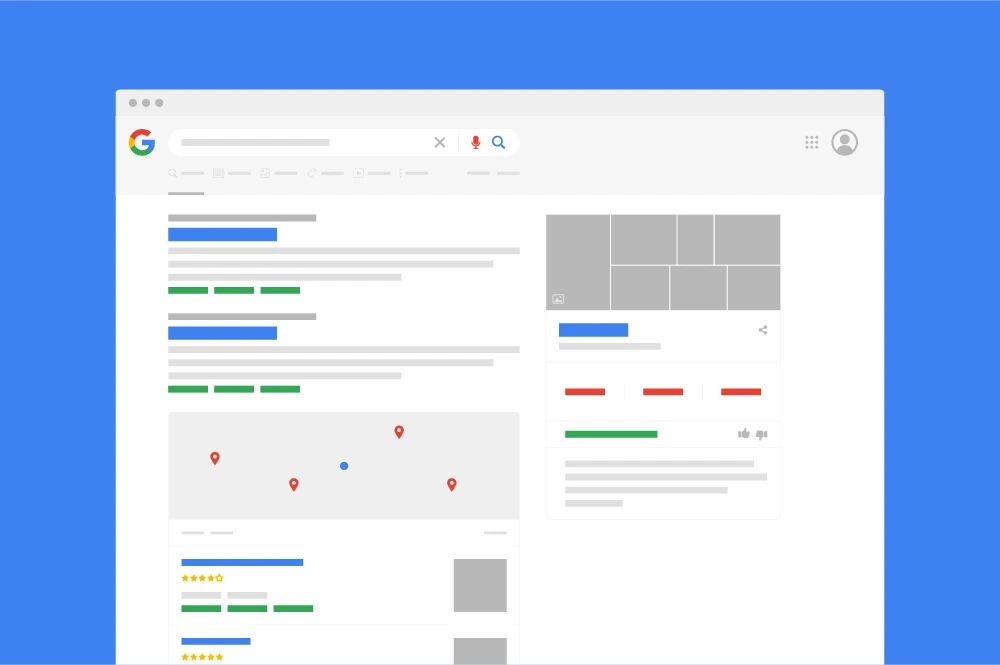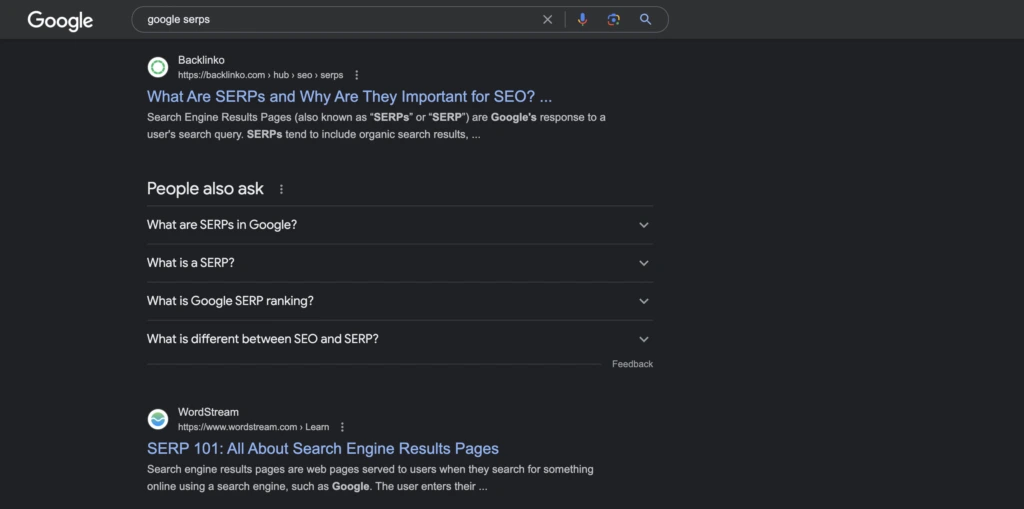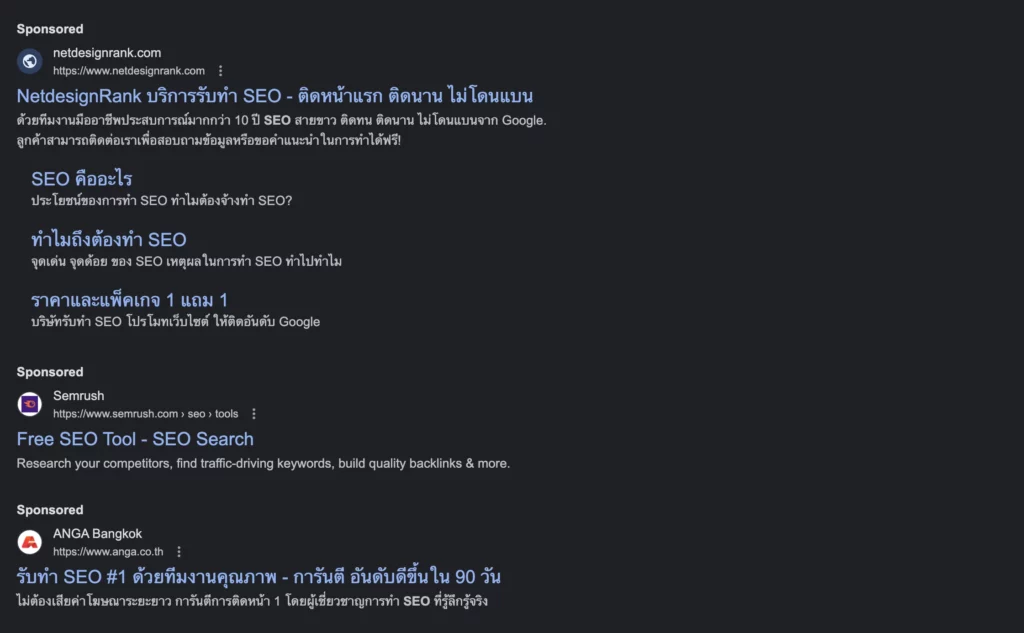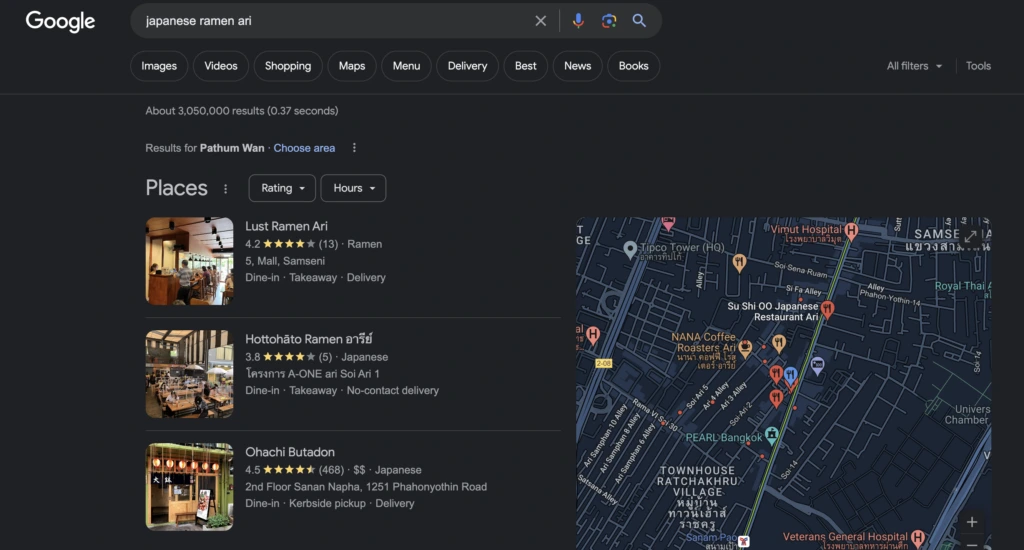Google Search has become an indispensable tool for finding information, products, and services. When users perform a search, they are presented with a Search Engine Results Page (SERP) that displays a variety of information and features. Throughout the years, many companies and websites have been dedicating their efforts into optimizing their own website to be presented on SERP. Understanding the key elements of Google SERPs is essential for businesses and marketers looking to optimize their online presence and attract organic traffic. In this blog, we will explore the important components of Google SERPs and their implications for search engine optimization (SEO) and user engagement.
Why is Google SERPs so important?

Google SERPs (Search Engine Results Pages) play a vital role in today’s digital landscape due to several key reasons. Firstly, they offer increased online visibility by exposing your brand to a vast audience. Being prominently displayed on Google SERPs increases the chances of attracting organic traffic to your website, leading to potential customers discovering your products or services. Additionally, ranking high in search results builds credibility and trust among users. When your website appears on the first page, it establishes authority in your industry and enhances your brand’s reputation.
Furthermore, Google SERPs contribute to brand awareness by reinforcing your presence in users’ minds. Even if users don’t click on your website, consistent visibility increases brand familiarity and recall, making them more likely to engage with your brand in the future. Achieving a higher ranking than your competitors on Google SERPs provides a significant competitive advantage. This is the reason why many companies strive to be displayed on Google SERPs.
In terms of targeted marketing, Google SERPs allow you to reach users actively seeking the products or services you offer. By appearing for specific search queries, you can connect with a highly relevant audience and increase the chances of converting them into customers as said in a long-tail keywords blog that the more specific search queries, the more possibility of purchasing. Moreover, Google constantly emphasizes the importance of user experience, favoring websites that provide a seamless and user-friendly interface. By optimizing your website for search, you enhance the overall user experience, leading to higher engagement and improved conversion rates.
Types of SERPs
There are various kinds of approaches companies choose and each of them serves different purposes with advantages and disadvantages in each of them. Let’s take a look at some of the well known SERPs:
Organic Search Results

The organic search results are the core listings that appear on the SERP in response to a user’s query. These results are ranked based on their relevance and quality, as determined by Google’s search algorithm. Businesses strive to appear in the top positions of organic search results to increase visibility and drive traffic to their websites. It is crucial to focus on optimizing on-page elements such as title tags, meta descriptions, and page content to improve organic search rankings.
The disadvantage of this type is that it requires a lot of effort to be able to acquire organic search results. Companies will need to put efforts in making their site SEO-friendly and that takes time especially if you are a small company competing with others that are already in the game.
Sponsored Search Results

Sponsored Search Results are the opposite of organic. Getting organic search results means that your website is in line with Google’s algorithm and is ranked based on the relevance and quality whereas sponsored sites are basically paid advertisements appearing at the top of SERPs.
Although it is ranked at the top of the search results, the word sponsored that is attached with sites often doesn’t feel as trustworthy as organic searched sites. Some people even view these sites as unreliable since there is no guarantee if it’s as good as organic results.
Featured Snippets
Featured snippets are highlighted information boxes that appear at the top of the SERP, providing direct answers to user queries. These snippets aim to give users quick and concise information without requiring them to click through to a website. Optimizing content for featured snippets involves providing clear and concise answers to common questions related to your industry or niche.
SERPs Knowledge Graph
The Knowledge Graph is a knowledge base created by Google that provides information about people, places, and things directly on the SERP. It includes information sourced from various trusted websites and can appear as a box on the right-hand side of Google SERPs. Optimizing for the Knowledge Graph involves structuring your website content to provide relevant and accurate information that aligns with Google’s knowledge base.
Local Pack

For location-based searches, Google often displays a Local Pack, also known as the “map pack,” featuring a map with three local businesses related to the search query. The Local Pack provides users with key information such as business names, addresses, phone numbers, and reviews. Optimizing for local search involves creating and optimizing a Google My Business profile, managing online reviews, and ensuring accurate and consistent NAP (name, address, phone number) information across all online platforms.
Paid Search Ads
Paid search ads, also known as Pay-Per-Click (PPC) ads, appear at the top and bottom of the SERP. Advertisers bid on specific keywords and pay when users click on their ads. While paid search ads can drive immediate traffic to a website, they require careful keyword selection, compelling ad copy, and effective budget management to ensure a positive return on investment (ROI).
Image and Video Results
Google SERPs may include image and video results, especially for visual-oriented searches. Optimizing images and videos for search involves using descriptive file names, alt tags, and relevant captions. Additionally, providing high-quality and engaging visual content can enhance user experience and increase click-through rates.
People Also Ask (PAA) Box

The People Also Ask (PAA) box is a dynamic feature that displays a series of related questions and their brief answers. Users can click on the questions to expand and view more information. Optimizing for the PAA box involves identifying common questions related to your industry and creating content that comprehensively addresses those queries.
Conclusion
Understanding the key elements of Google SERPs is crucial for businesses and marketers aiming to enhance their online visibility, attract organic traffic, and engage users effectively. By optimizing for organic search results, featured snippets, the Knowledge Graph, local search, paid search ads, images, videos, and dynamic features like the PAA box, businesses can improve their search rankings, drive targeted traffic, and provide valuable information to users.
Stay updated with Google’s algorithm changes, user behavior trends, and evolving SERP features to adapt your SEO strategies and stay ahead in the competitive online landscape. Embrace the power of Google SERPs to maximize your online presence and achieve your business goals.
Yes Web Design Studio
Tel. : 096-879-5445
LINE : @yeswebdesign
E-mail : info@yeswebdesignstudio.com
Facebook : Yes Web Design Studio I Web Design Company Bangkok
Instagram : yeswebdesign_bkk
Address : 17th Floor, Wittayakit Building, Phayathai Rd, Wang Mai, Pathum Wan, Bangkok 10330 (BTS SIAM STATION)








